|
As we continue through this summer, it can feel like the heat and humidity exhaust us to the point where everyday feels the same. It seems to be a never ending cycle of heat, mosquitoes and thunderstorms and I find myself focused on the negative as I just float along. However, when I have a goal in mind, something that I am striving towards, the hot days suddenly become more bearable. I need that jolt of fresh air to keep me going. Just like our physical lives, our spiritual lives in the summer can go through some exhaustion as well. For those who have not explored our Saint Website yet, we hope it can be a spark for you this August. For those of you who already look at our saints of the day, we have added five new saints this month that can hopefully be insightful and helpful for your prayer and reflection time throughout the month. Bl. Frédéric Janssoone Tomorrow we will celebrate the life of 19th century Franciscan Bl. Frédéric Janssoone. Although he lived and worked at the end of the 1800s, his life can still be a model for so many of us today. He was a missionary in Canada and was not only known for his missionary work, but also for his handling of the administrative tasks of the growing missionary efforts of the Franciscans there. Today, it is easy to compartmentalize ourselves as being good at one thing at a time, for example, either excelling at missionary work or administrative work. The life of Bl. Frédéric, however, shows us that with the guidance of the Holy Spirit we can combine both missionary and administrative work into a life of holiness. He is a wonderful example of how we can allow the Lord to work in our lives in many different ways. Bl. Frédéric Janssoone, Pray for Us St. Mary MacKillop On August 8th, we will celebrate the feast of St. Mary MacKillop. I found it interesting that St. Mary MacKillop lived at almost the exact same time as Bl. Frédéric Janssoone. Here are two people, from different walks of lives, in different parts of the world who both found their way to Sainthood. It gives us reason to believe that there are saints all throughout the world in our time. I also think that St. Mary MacKillop was inspirational because she was the first person to be canonized from Australia. It is always hard to be the first person for anything. Most people do not like to be put out of their comfort zone, much less to be the first person canonized as a saint in a specific country. Whether it be our career, our socioeconomic situation, or any other hardship we may face in our life, we can always look to St. Mary MacKillop as a role model for living a saintly life under challenging circumstances. St. Mary MacKillop, Pray for Us St. Alberto Hurtado In the middle of the month, we will celebrate St. Alberto Hurtado. He was a 19th century Chilean Jesuit. After joining the Jesuits, he noticed two main problems that would become the basis for his ministry. First, many Catholics in the country had very little interaction with a priest. Second, many of the poor, including children, did not have housing. St. Alberto Hurtado devoted his life to helping the people of Chile overcome these two problems and I encourage you to read more about his work! I am particularly inspired by the ability of St. Alberto Hurtado to notice the societal issues at the time and fix them with haste.. He did not wait for someone else to do it; he saw the need and he addressed it right away. In our lives, may we strive to be as receptive and adaptive as St. Alberto Hurtado and help those around us without hesitation. St. Alberto Hurtado, Pray for Us St. Joseph Calasanz The feast of St. Joseph Calasanz will be celebrated on August 25th. He lived and worked at the end of the 16th century and beginning of the 17th century in Italy. St. Joseph noticed that children from poor families were not able to receive an adequate education which would put them at a disadvantage later in life. This lack of education perpetuated the cycle of poverty among poor families and greatly reduced the educational success of their children. St. Joseph founded some of the first free schools in Rome which greatly helped these marginalized children in their attempt to escape this cycle. Let us learn, from the example of St. Joseph Calasanz, of the power that education has to lift people up and benefit everyone in society. St. Joseph Calasanz, Pray for Us St. Joseph of Arimathea The story of St. Joseph of Arimathea is one that most of us are familiar with from the Gospels. We will celebrate his feast on August 31st to close out the month. St. Joseph of Arimathea was a follower of Jesus who helped take Him down from the Cross and give Him a proper burial after his crucifixion. After he saw eleven of the twelve Apostles abandon Jesus during his Passion and the brutal death Jesus suffered, St. Joseph remained resolute in his faith and helped to care for Jesus during his death. Let us pray for the intercession of St. Joseph of Arimathea and ask that even in the most trying of times, we may, like him, stay committed to Christ and to the care of others. St. Joseph of Arimathea, Pray for Us To learn more about the saints, visit our Catholic Feast Days Website by clicking here.
0 Comments
As part of our continuing efforts to grow the Catholic Feast Day Site, we have added one lesser-known saint or blessed per week. While these saints might not have the renown of St. Patrick or St. Francis of Assisi, they still are powerful role models and intercessors. When I was helping compile the resources to add these saints and blesseds to the site, I would try to put myself in their shoes. It is easy to write about them abstractly, just like a laundry list, but as I would imagine their situations, I would find myself in awe at how Christ worked through their life. During the rest of this month, we will celebrate the feasts of three incredible individuals in the life and history of the Church. St. Clement Mary Hofbauer Tomorrow, on March 15th, we will celebrate the feast day of the Redemptorist priest St. Clement Mary Hofbauer. Clement Mary Hofbauer lived from 1751 to 1820, a very tumultuous time in central Europe, especially around Poland and Austria where he lived. He helped open the first congregations of the Redemptorists north of Italy, helping the order spread throughout Europe. Clement Mary was responsive to the extreme poverty and need throughout Poland which was the result of the violent political conflict. He tried to help everyone he could. It must have felt like he was trying to drink from a fire hydrant with a straw, but he kept working for all the impoverished in Poland. Even after the political situation caused him to leave Poland for Vienna, he continued his work of helping individuals, even when some people might have seen it as futile. In honor of St. Clement Mary Hofbauer’s feast day, let us pray for his intercession, so that we too may trust that even when our works seem small, God can do great things through us. St. Rafqa Next week, on March 23rd, we will celebrate the feast of St. Rafqa. For me, St. Rafqa was one of those saints that made me glad I took the time to reflect on her life. Biographically, she was born in 1832 in Lebanon and died in 1914. She was a Mariamette Sister until 1871, and when the sisters merged with a different order, she joined the Lebanese Maronite Order and lived a quiet life of personal piety afterwards. That alone is impressive. But then I think about the incredible uncertainty and stress that must have come with the change from the Mariamette Sisters to the Lebanese Maronite Order. And I read that she lived the last twenty-nine years of her life with chronic headaches and eye pain, yet she continued her work in the order. Then she spent the last seventeen years of her life, while still in chronic pain, helping found a new monastery. In honor of St. Rafqa’s feast day, let us pray for her intercession, so that we too may keep Christ at the center of our lives, no matter the obstacles thrown in our way. Bl. Francesco Faà di Bruno On March 27th, we get to close out the month by celebrating the feast of Bl. Francesco Faà di Bruno. Faà di Bruno lived in the mid- and late nineteenth century in Italy. In the early part of his life, he was a well-known mathematician, especially renowned for his study of elliptic functions and higher order calculus. After becoming friends with St. John Bosco, Faà di Bruno became an active social reformer throughout Turin, helping those who otherwise would be forgotten by society. Unusual for the customs of the time, Faà di Bruno decided to become a priest in his late forties and spent the rest of his life as a priest, social reformer, and mathematician. It wasn’t that being a priest precluded him from being a mathematician; he lived his life in three-fold harmony. He even has a formula for high-level calculus named after him today! I find his life an inspiring model of how high-level math, faith, and social justice can all live in harmony while complementing each other. In honor of Bl. Francesco Faà di Bruno’s feast day, let us pray for his intercession, so that we too may let our God-given gifts shine and bring Christ’s love to others. St. Clement Mary Hofbauer, pray for us. St. Rafqa, pray for us. Bl. Francesco Faà di Bruno, pray for us. To learn more about the saints, visit our Catholic Feast Days Website by clicking here.
Once I learned about the tradition of picking a Confirmation saint, I was instantly interested in the life of St. Felicity. She was the Confirmation saint of my older cousin, with whom I am very close. I always heard the story that when the bishop heard that she chose St. Felicity as her saint, he had a big smile on his face. When it became my turn to be confirmed, this same cousin was my sponsor, so I thought it would be fitting that I also choose Felicity to be my saint. But I didn’t know a ton about St. Felicity, besides the fact that she had a very pretty name, was a martyr, and had her name read out in the Litany of Saints at the Easter Vigil Mass. As I have begun to research more about her life and martyrdom, I have only become more and more interested in learning about her. The first thing that I noticed about St. Felicity is that she is most commonly associated with St. Perpetua; you usually see them styled as “Sts. Perpetua and Felicity”. This is because the two women were imprisoned and martyred together in the early days of the Church, but that is just about the only similarity between the two women. St. Perpetua was a young noblewoman who had just become a mother at the time of her death, while St. Felicity was an enslaved woman who was imprisoned and pregnant at the time of her death. I couldn’t help but wonder how the two women became to be martyred together while on very different paths in their life. Perpetua’s father, who was pagan, pleaded with her to denounce her Christian faith, which she refused to do. This led to her imprisonment in Carthage, North Africa, at the age of twenty-two. As for Felicity, the only information we know is that she too was imprisoned for the refusal to deny her faith. There is actually a first-hand account of Perpetua’s imprisonment from a diary that she wrote, and in it, she details the horrors of her confinement. She writes, “After a few days we were taken into prison, and I was much afraid because I had never known such darkness. O bitter day! There was a great heat because of the press, there was cruel handling of the soldiers.” I can only imagine the rollercoaster of emotions that Perpetua was feeling during her imprisonment. She was taken away from her child and suffered violence from the soldiers, all for refusing to go against her faith. Sts. Perpetua and Felicity and their companions were soon martyred. They had all accepted their fate for their belief in God and lived out their final days in prayer. Prior to her death, St. Felicity gave birth to a baby girl, who was raised by a Christian woman in Carthage. I find it to be very fitting that the feast of Sts. Perpetua and Felicity happens to fall during Lent, a time in which we are meant to reflect on the suffering that Jesus faced during his Death and Resurrection. We can look back on the martyrdom of Sts. Perpetua and Felicity as another example that bears witness to extreme fortitude, similar to that of Jesus. Over the years, I have really enjoyed learning more about the life of St. Felicity, and I feel proud to have chosen her as my Confirmation saint after seeing the strength she showed during the suffering she faced at the end of her life.
As I have gotten to work on our Feast Day website over my time working at the Catholic Apostolate Center, I have always been fascinated with saints that seemed extraordinary but whom I had never heard about before. I couldn’t believe that these saints weren’t more well known. Just when I thought there wasn’t possibly anything new I could read about in the life of a saint, I would learn something that left me awestruck. I knew we needed to add some of these lesser-known saints to our Feast Day website to help others learn about their tremendous lives. We have picked saints who are truly from all walks of life: from the early Church to the end of the twentieth century, from teenagers to those who didn’t devote themselves to Christ until the end of their lives, from artists to biochemists to hermits. I want to highlight the three we are celebrating in the remainder of February to help you become more familiar with them. Bl. Fra Angelico (February 18th) We will celebrate the feast of Bl. Fra Angelico at the end of this week. From his youth, Bl. Fra Angelico was an incredibly talented painter. Even with his skill and success, he listened to God’s call and joined the Dominicans. His time with the Dominicans allowed his artistic skills to flourish. The Dominican charism permeated all of his paintings, and he became one of the most successful painters of the early Renaissance period. I find it inspiring that while he was at the top of his field, he remained humble and committed to Christ and the Dominicans; he truly is a role model for all time. For his feast day this year, I am looking forward to looking at images of some of his most famous pieces of art and prayerfully meditating on the religious imagery and symbolism in them. Three of his works in which I always see something new are the San Marco Altarpiece, The Transfiguration, and the Madonna of Humility. Bl. Fra Angelico, Pray for Us! St. Lazarus Zographos (February 23rd) The week after Bl. Fra Angelico, we continue the artistic theme with the feast of St. Lazarus Zographos. St. Lazarus was a ninth-century iconographer and the first saint to be canonized who specifically dedicated himself to this trade. He was a renowned iconographer, which normally would bring praise and success, but he lived in a time of strict sentiment against iconography, and iconographers were persecuted throughout the Byzantine Empire. This didn’t deter St. Lazarus. He continued writing icons and even wrote them when he was in prison for doing so. While reading about St. Lazarus’ life, I learned that one should say “writing” rather than “painting” icons, because the process of creating an icon is about more than just painting; it is about the prayer, tradition, and the painting all coming together in the icon. While none of his icons exist today, for St. Lazarus’ feast day, let us learn more about his life and pray with icons from other iconographers. St. Lazarus Zographos, Pray for Us! St. Gabriel of Our Lady of Sorrows (February 27th) In the last week of the month, we will celebrate the feast of St. Gabriel of Our Lady of Sorrows. Compared to the other two saints above, St. Gabriel highlights the diversity in the lives of the blesseds and saints of the Church. St. Gabriel was a nineteenth-century Italian who suffered many illnesses and maladies in his youth. Each time he made a promise to himself that he would enter religious life if he got better. Even though he didn’t keep his promise many times, he finally did so and joined the Passionists after his sister died in the cholera epidemic. However, his life was cut short by tuberculosis when he was just twenty-three while still studying to be ordained a priest. Pope Benedict XV declared St. Gabriel the patron saint of Catholic youth as well as those studying for the priesthood. Sometimes the lives of saints who had established lives and successful careers, like Bl. Fra Angelico, can seem overwhelming. But a saint like St. Gabriel can be more relatable. Like us, he was just on his way and strove to live each and every day growing closer to Christ. For St. Gabriel of Our Lady of Sorrows’ feast, let us reflect on how we can grow closer to Christ throughout our everyday routines. St. Gabriel of Our Lady of Sorrows, Pray for Us! To learn more about the saints, visit our Catholic Feast Days Website by clicking here.
As we conclude this June, we will celebrate four saints over three days who were crucial during the early days of the Church. Yesterday we celebrated St. Cyril of Alexandria. Today we celebrate St. Irenaeus. Tomorrow we will celebrate Sts. Peter and Paul. All these saints were instrumental in the spreading of the Gospel and in the formation of the Church during its first few centuries. Even though they lived long ago, their lives carry many messages for us today. St. Cyril of Alexandria St. Cyril was the bishop of Alexandria in the beginning of the 400s when the city was powerful politically and intellectually. Throughout his life, St. Cyril of Alexandria faced many political conflicts with other bishops, the patriarch of Constantinople, and the Roman emperor. However, even through these challenging situations, he remained steadfast in his faith and was a proliferous theological writer. Today he is counted among the Church Fathers and Doctors of the Church. One of the teachings of St. Cyril of Alexandria that has always stuck with me is his defense of Mary under the title of “Theotokos.” Theotokos roughly translates to “Mother of God” or “God-bearer” and has been a title of Mary in the Church, especially in Eastern churches, since the time of St. Cyril. Some of my favorite icons of Mary represent her as Theotokos and have really helped me grasp St. Cyril of Alexandria’s teaching. St. Irenaeus Today we celebrate the feast of St. Irenaeus. St. Irenaeus was a bishop in the 2nd century known during his lifetime as one of the last living connections to the Apostles. Like St. Cyril of Alexandria, St. Irenaeus was a prolific theologian who helped guide the Church through many theological controversies and heresies, most notably Gnosticism. For this theological impact on the Church, St. Iraneus was named a Doctor of the Church (just earlier this year by Pope Francis). If you like the nitty-gritty of theology, I encourage you to read more about St. Irenaeus. For me, the quote from St. Irenaeus that has had the biggest impact on my life is: “the glory of God is man fully alive.” I always found the word fully particularly inspiring. I connected this with John 10:10, “a thief comes only to steal and slaughter and destroy; I have come so that they might have life and have it more abundantly.” Throughout our life, in both the big events and the mundane events of day-to-day life, Jesus is calling us to full, abundant life. Sts. Peter and Paul Tomorrow we will celebrate the solemnity of Sts. Peter and Paul. Unlike a majority of saint’s feast days, the feast of Sts. Peter and Paul is celebrated as a solemnity as a sign of their importance to the early days of the faith. While there are many elements of the lives of Sts. Peter and Paul that could be explored, I have always found it striking that they are celebrated on the same day. After St. Paul’s conversion, St. Peter was in a very challenging position that took strong leadership guided by the Holy Spirit to navigate welcoming Paul into the community he once sought to kill. Then, throughout their time working together, they frequently did not see eye to eye on the important issues they faced. Yet, through their disagreements they kept the greater good of the Church in mind and both ended up being martyred for the faith. In our day and age, I think we all can learn a lot from the leadership and collaboration guided by the Holy Spirit exemplified by Sts. Peter and Paul, even when we do not necessarily get along with the people we are working with. Let us always pray for the intercession of St. Cyril of Alexandria, St. Irenaeus, and Sts. Peter and Paul as we strive to learn from their example and bring Christ to those in our lives. To learn more about the saints, visit our Catholic Feast Days Website by clicking here. To view a calendar of the feast days in June, and each month, click here.
This May, we have the joy of spending the whole month in the Easter season. We begin this month not far removed from Easter Sunday and end the month by celebrating the Ascension. Some parishes will also start a Pentecost Novena leading up to Pentecost on June 5th. One quirk of celebrating the saints is that when their feast day falls on a Sunday, we typically don’t get to celebrate them at Mass and learn about their lives. This May, there are three outstanding saints whose feasts fall on the three Sundays leading up to Pentecost. St. Isidore the Farmer The feast of the 11th and 12th century saint, Isidore the Farmer, is celebrated on May 15th. I find the life of St. Isidore the Farmer incredibly inspiring. St. Isidore was not a priest or member of the clergy. Rather, he was a pious farmer who was devoted to his work and also attended daily Mass. Through his commitment to farming and to the Eucharist, he was able to make a difference in his community and become a role model for other farmers. In today’s world, I sometimes find it hard to work in a more secular field while I have friends who work for the Church. I think of the example of saints like St. Isidore the Farmer who lived out their faith in their work and this witness inspires me hundreds of years later. As we prepare for Pentecost, let us pray for the intercession of St. Isidore the Farmer in living out our faith throughout our daily work. St. Rita of Cascia A week later, on May 22nd, we celebrate the feast of St. Rita of Cascia. St. Rita was a 15th century married Italian woman who eventually became an Augustinian nun. She is known as the patron saint of marital problems because of the way she gracefully handled her difficult marriage and her husband’s death by a feuding family. After her husband’s death, she cared for her sons and eventually became an Augustinian nun who devoted herself to praying for peace in the community of Cascia. Along with St. Jude, she is also known as a patron saint of lost and impossible causes. As we continue to prepare for Pentecost, let us pray for the intercession of St. Rita of Cascia in any challenges that may be holding us back from growing in our relationship with the Risen Christ. Pope St. Paul VI On May 29th we celebrate the feast of Pope St. Paul VI, one of the most recently canonized saints. Pope St. Paul VI continued the Second Vatican Council after the death of Pope John XXIII and helped implement many of the decisions and reforms that came from the Council. Many of these decisions were incredibly challenging, but Paul VI was able to navigate the situation and is highly respected for his ability to lead the Church in difficult times. Paul VI also helped grow ecumenical relations with Eastern Orthodox and Protestant churches—a model which continued into the papacies of his successors. As we continue to prepare for Pentecost, let us pray for the intercession of Pope St. Paul VI in making difficult decisions that ultimately will help us grow closer to God and to our neighbor. To learn more about the saints, visit our Catholic Feast Days Website by clicking here. To view a calendar of the feast days in May, and each month, click here.
"Since you are ambassadors and ministers of Jesus Christ in the work that you do, you must act as representing Jesus Christ himself. He wants your disciples to see him in you and receive your instructions as if he were giving them to them. They must be convinced that your instructions are the truth of Jesus Christ who speaks with your mouth, that it is only in his name that you teach, and that it is he who has given you authority over them.”—St. John Baptist de la Salle The entirety of the baptized are, as St. Paul says, “ambassadors for Christ,” but St. John Baptist de la Salle—the patron saint of teachers—expands on this idea for educators of the youth. La Salle sees teachers as becoming the image of Christ for students in the classroom. This idea necessitates that teachers teach their disciplines well, but they must also be models of love and virtue for their students. As a Secondary Education and History student observing at a Washington D.C. Catholic middle school, I have recently reflected on my role as a classroom teacher. Teachers, in many ways, become an extension of the domestic church. As children reach kindergarten age, they begin to spend the vast majority of their weeks—close to seven hours a day Monday to Friday—in the care of their teachers. The sheer amount of time students spend with their teachers necessitates that teachers become another guardian for their students. I have seen this first-hand in an eighth-grade class I have been observing. Students look to their teacher for guidance and reassurance, and their teacher provides structure, help, and correction for each student as needed. Particularly, in middle and high school, teachers begin to form students’ adolescent and adult mannerisms, and a teacher’s embodiment of Christ’s charity is essential for students to see how the Christian life is lived. Students crave a person to model, and while Jesus is the perfect example, it is hard for many to conceptualize how Jesus lived as a human being. La Salle explains, “Example makes a much greater impression on the mind and the heart than words, especially for children, for they do not yet have a mind sufficiently able to reflect, and they ordinarily model themselves on the example of their teachers” (la Salle, Meditations for Time of Retreat). A teacher must then step in as a witness to Christ’s mission lived out in the modern world. Teachers cannot be aloof people who look perfect to students. Instead, instructors must show that they are human with the capacity to make mistakes in classroom instruction and in working with their students. Over this semester of observations, I have noticed that students will eventually place their trust in you as they get to know you. As I assisted students with their classwork, asked them questions about their class and school, and talked about life, they slowly began asking me questions and fostering conversations with me. This culminated when I taught a complete lesson on the Roaring 20s and the Harlem Renaissance. My students engaged with me throughout the class period, and they even offered me feedback like a need to slow down a little and explain my slide images more. Students were also appreciative that I did not have all the answers to their questions, but I followed them up by saying, “let me check on that and get back to you.” Teachers must show students that they are an authority on their content and should be a trusted source of knowledge, but they also have limitations and do not know every single fact on a subject. Teachers—like pastoral ministers—must recognize the gravity of their role and hold themselves to a high moral and professional standard, but they must also be down-to-earth and relatable. This relatability in the classroom for middle and high school students allows for a form of collaboration where teachers and students work together to pursue the truth and the Christian life. St. John Baptist de la Salle was constantly trying to teach his order of teaching brothers that they were ministers of the Church and Christ and that the salvation of students lay within their hands as teachers. La Salle asked teachers to give of themselves to inspire their students in their academics and faith lives because he realized that students craved authentic witnesses to the theological and human truths of life. St. la Salle explained himself best when he wrote, “for the love of God ought to impel you, because Jesus Christ died for all, so that those who live might live no longer for themselves but for him who died for them. This is what your zeal must inspire in your disciples, as if God were appealing through you, because you are ambassadors for Jesus Christ” (la Salle, Meditations for Time of Retreat). In many ways, St. la Salle preempted modern evangelization practices with his emphasis on authentic witness as a means to bring people closer to God. To learn more about the saints, visit our Catholic Feast Days Website by clicking here.
This April, we have a busy season of liturgical events. From the conclusion of Lent to Palm Sunday, Holy Week, Easter, and the Octave of Easter, the entire Easter season is filled with solemn liturgies, commemorations, and celebrations. Through it all, we are called to grow in our relationship with the Lord. When every Sunday seems to be celebrating or commemorating something different, I often find myself turning to the saints for some consistency and routine. Saints to Prepare us for Holy Week This week, we celebrate three saints who can help us prepare for Holy Week. Today, we celebrate the 14th century Dominican St. Vincent Ferrer. He was a gifted intellectual who discerned God’s call for him to be a missionary and ultimately became known for his missionary work all throughout Europe. St. Vincent Ferrer incorporated his intellectual gifts into missionary work for the good of the universal Church. Yesterday, we celebrated another gifted intellectual in the history of the Church: St. Isidore of Seville. St. Isidore is known for his writings which helped spread the faith even long after he had died. On Thursday, we will celebrate St. John Baptist de la Salle. He is known for his educational reforms which included the founding of the Institute of the Brothers of the Christian Schools. Through prayer and discernment, he recognized the need for education reform which included having trained lay teachers. He devoted his life to increasing the access to education for those who normally would not get such opportunities. We can look to all three of these saints to help us prepare for Holy Week by allowing the Lord to work in our lives using the gifts He gave us. April 28th On April 28th, we will celebrate three saints who have left a great impact on the Church: St. Louis de Montfort, St. Peter Chanel, and St. Gianna Molla. St. Louis de Montfort was alive from the late 1600s to the early 1700s. Even though he died when he was only 43 years old, many of his writings form the basis of much of Mariology (the study of Mary) today. St. Peter Chanel was a 19th century Marist who was a missionary on the Polynesian island of Futuna. After four years of tireless work helping the islanders with daily life, Peter Chanel was martyred when the chief’s son converted to Catholicism. After his martyrdom, many of the islanders eventually converted to Catholicism, including the chief himself. Now the island (as well most of Oceania) has a strong devotion to St. Peter Chanel. Lastly, we will celebrate the 20th century saint, St. Gianna Molla on April 28th. St. Gianna Molla was an Italian pediatrician who refused an abortion and hysterectomy despite her life-threatening pregnancy and eventually died after giving birth. She is known for following the teachings of the faith while serving as a doctor and is a model for Catholics practicing medicine today. As we enter this liturgically busy April, let us look to the saints we celebrate this month for inspiration in following God’s will throughout our lives using the gifts He has given us. To learn more about the saints, visit our Catholic Feast Days Website by clicking here. To view a calendar of the feast days in April, and each month, click here. For more Lenten and Easter resources, please click here.
In the Church, we have a timely liturgical schedule of feasts, seasons, and commemorations. Each year, we practice prayer, fasting, and almsgiving during the season of Lent in order to prepare ourselves for the Resurrection of the Lord at Easter. In Advent, we hear readings from Isaiah that help us to turn our attention to the coming of Christ both in his nativity at Christmas and at the end of time. In addition to these seasons, we also celebrate individual days as part of practicing our faith. On St. Therese’s feast day, we ask for roses to cross our path to confirm her intercession for us. On All Souls’ Day, we remember those who have died and pray for their sanctification. According to paragraph 102 of the Dogmatic Constitution on the Sacred Liturgy, or Sacrosanctum Concilium, in celebrating these feasts and seasons, the Church “unfolds the whole mystery of Christ, from the incarnation and birth until the ascension, the day of Pentecost, and the expectation of blessed hope and of the coming of the Lord.” In other words, the variety of feasts and seasons allow us to contemplate the life and mystery of Christ from different angles. For example, at Christmas, the Church looks with awe upon God becoming human in the Incarnation. On the feast day of the Annunciation, we reflect on God’s total initiative to redeem the human race with the collaboration of Mary’s fiat. Celebrating the witness of the saints on their feast days inspires us that we too can witness to the love of God in large and small ways in our lives. Each of these examples gives us glimpses at aspects of our faith and renews our devotion to “the whole mystery of Christ.” Why is it important to mark particular days and seasons as days to commemorate certain aspects of our faith? Further along in paragraph 102 of Sacrosanctum Concilium, we find the answer: “Recalling thus the mysteries of redemption, the Church opens to the faithful the riches of her Lord's powers and merits, so that these are in some way made present for all time, and the faithful are enabled to lay hold upon them and become filled with saving grace.” In short, celebrating these feasts and seasons help us grow in grace. We hear readings that help us think about what the feast commemorates. We pray particular prayers that ask for the intercession of the saints we celebrate. We participate in special traditions, such as creating offrendas during All Souls Day, or preparing large feasts on the feast day of St. Joseph. Because of the liturgical calendar, we are invited to stop and be drawn into contemplation of the love of God. The love of God is not something we are invited to contemplate only on days or seasons marked by the official liturgical calendar. In addition, we can also continue to allow our attention to be drawn to the love of God in the feasts and seasons in our personal lives. For example, we might keep vigil on a particular date each year to remember the death of a loved one. We might even mark the difficult or challenging events of our lives, such as the date of a breakup, the date of a move away from a former home, or the date of a medical diagnosis. On the other hand, we may call to mind particular dates of joyful occasions, such as the acceptance into a school, a proposal or marriage, or coming home from military service. Just like formal feast days, the informal feast days of our lives also allow us to contemplate the mystery of Christ and the love of God through different lenses. The date of a breakup might remind us of the pain we went through, but the eventual freedom we may have found later on by trusting in God’s providence. Commemorating the date of the death of a loved one each year might give us the chance to reflect on the gift of friendships and relationships in our lives and how they have contributed to our growth and becoming. Keeping memory of the date of an initial medical diagnosis might allow us to think about our reliance on God and remind us to unite our suffering with Christ’s suffering. The anniversary of a wedding or proposal punctuates our lives with gratitude for a partner or spouse. In keeping our own personal liturgical calendar in addition to the Church’s formal liturgical calendar, we are invited to contemplate the “whole of the mystery of Christ” in our own personal lives. We can reflect upon the love and providence of God made manifest not only in the feast days of the Church’s formal liturgical calendar, but also in the significant events in our lives that have drawn us deeper into the mystery of our own relationship with God and others. By punctuating our lives with universal and personal liturgical feasts, we call to mind Christ’s words in the Gospel of Matthew in a profound way: “And behold, I am with you always, until the end of the age” (Matthew 28:20). What are some days or seasons in your life that you might add to your personal liturgical calendar? In remembering these dates, how are you being invited to contemplate God’s love for you?
I came upon St. John of God not because of his story--which has distinct similarities with that of his Spanish counterpart Ignatius Loyola--but because of one of his patronages. I found myself dealing with heart issues about a year and a half ago and began searching for a saint whose intercession I could pray for. The Catholic Church has a saint for just about everything, so I knew I’d likely find someone. I found St. John of God and immediately began praying his novena; he’s remained with me since. St. John of God’s story is a fascinating one. He left his biological family when he was about eight years old to follow a priest who had interested him with his tales of the new world. John then fell sick and was nursed back to health by the person who would later adopt him. Around the age of thirty, John entered the Spanish army and went to war against France. Like Ignatius, John lived a life of sin and revelry while a soldier. It wasn’t until an accident (he was thrown off a horse instead of shot by a cannon ball like Ignatius) that he decided to reform his life. After finally leaving the army, John went off to Africa with the goal of aiding Christians and potentially becoming a martyr. He was told that seeking martyrdom was not a good spiritual practice and eventually returned to his native Spain. He later worked at a religious bookstore until he heard a homily from St. John of Avila which led him to sell all of his books and to give the money away. For this uncharacteristic behavior, he was taken to a mental hospital and, after his release to the main hospital, began to help take care of the other patients. This led John to start his own hospital and eventually found the Brothers Hospitallers. He did this, like many things, out of great love for others, the same love which led him to his death after he attempted to save a boy from drowning. St. John of God’s life can teach us so much. His life of revelry and constant back and forth changes in his spiritual life will seem quite familiar to some. Fascinated by God at an early age, living in revelry and sin in young adulthood before finally returning to God, and dedicating his life to God is a very common story. He lived his later life in a way that led him to follow his heart. These actions led others to ridicule him and even got him thrown into the hospital for mental health concerns, but that didn’t stop him. He allowed his heart, guided by what he discerned to be God’s will, to lead him in his life. St. John of God is truly patron of the heart, not only in its ailments, but for all of those who live life by following God’s promptings in their hearts. May we follow our hearts when they are open to and guided by the Word of God and the Holy Spirit. To learn more about the saints, visit our Catholic Feast Days Website by clicking here.
On the Center’s Feast Day Website, March is the month with the least number of feast days, 11 in total. But, this doesn’t mean that there isn’t a range of saints and life experiences represented this month. Two of the saints in March are perhaps some of the most well-known saints: St. Patrick and St. Joseph. Also this month, we will celebrate a famous American saint, St. Katharine Drexel, an influential Peruvian, St. Turibius of Mogrovejo, and one of my favorite saints, the Salvadoran St. Oscar Romero. St. Katharine Drexel St. Katharine Drexel was born in 1858 in Philadelphia. She was born into a wealthy family and inherited a large sum of money after her father died. Katharine and her sisters wanted to help Native Americans and African Americans with the money they inherited. In a private meeting with the pope, he recommended that Katharine become a sister to carry out the work she wanted to do. Doing this, however, would require Katharine to leave the affluent social circles of Philadelphia. She decided that she was being called to religious life and founded the Sisters of the Blessed Sacrament. To this day, the Sisters founded by Katharine continue to work for the education of Native Americans and African Americans across the United States. I find St. Katharine Drexel’s life particularly admirable because of the courage it must have taken to step into the unknown of founding a religious community even though she had such security in the wealth of her inheritance. St. Turibius of Mogrovejo The feast of St. Turibius of Mogrovejo is celebrated on the day of his death, March 23rd. He became archbishop of Lima, Peru in 1580, moving from his native Spain to Peru to be the archbishop. While he was archbishop, he focused on evangelization throughout his diocese. This included many, many baptisms, including baptizing eventual saints Rose of Lima and Martin de Porres. Turibius also focused on incorporating the indigenous languages into the work of the priests throughout the diocese. Personally, I think St. Turibius’ wisdom and understanding carries many lessons for us today. His ability to go into an unknown place and work with the local community can be a model for our efforts in the New Evangelization. Let us not forget the local community and culture of where we might minister, but collaborate with the culture and community. St. Oscar Romero One of my favorite saints is St. Oscar Romero. I did not know much about the life of St. Oscar Romero until I visited El Salvador in 2019. While I was in El Salvador, I got to visit his tomb as well as the chapel where he was celebrating Mass when he was killed. Romero was named the archbishop of San Salvador in 1977 because he was considered a safe, non-divisive choice in the country that had extreme political unrest. However, Romero saw the extreme suffering of the people of El Salvador and devoted himself as archbishop to speak out against the injustices faced by Salvadorans. He knew that doing this put his own life in extreme danger, but he was willing to do so to help Salvadorans. In 1980, after only 3 years as archbishop, Romero was shot and killed while celebrating Mass. Today, Romero is one of the most well-known and respected Salvadorans. Whether you know a lot or nothing at all about St. Oscar Romero, I encourage you to read more about his life, especially the homilies and speeches he gave to all of the people of El Salvador. This March, let us learn more about the lives of St. Katharine Drexel, St. Turibius of Mogrovejo, and St. Oscar Romero and ask for their intercession in our lives and in the life of the Church. To learn more about the saints, visit our Catholic Feast Days Website by clicking here. To view a calendar of the feast days in March, and each month, click here.
As we continue into the second month of 2022, let us learn from the saints we celebrate this February. While this is a shortened month, there are three instances this month where we get to celebrate two saints on the same day. On February 8th, we will celebrate both St. Jerome Emiliani and St. Josephine Bakhita. Then, two days later, we celebrate both St. Scholastica and St. Jose Sanchez del Rio. Finally, on February 21st, we celebrate both St. Peter Damian and Bl. Richard Henkes. May their witness of the faith inspire us to follow in their footsteps and grow in our faith throughout the month. February 8th One of the saints who we will celebrate on February 8th is St. Jerome Emiliani. After his conversion of heart as a prisoner of war, he worked tirelessly for orphans and the poor in his community. He founded the Somaschi Fathers who, even today are committed to helping orphans, the poor, and the sick. He became well known for his zeal and his work has continued now almost 500 years later. On the same day, we will also celebrate St. Josephine Bakhita. She was born in 1869 in Sudan. As a child, Bakhita was forced into slavery. Eventually she ended up in Italy where she was freed and converted to Catholicism. She then became a Canossian Sister and devoted the rest of her life to her faith. Throughout her life, she was known as a role model for forgiveness and continuing to grow in her faith. February 10th One of the saints whose feast is on February 10th is St. Scholastica. St. Scholastica is known as the twin sister of St. Benedict, the founder of the Benedictines. Once a year, St. Scholastica and her brother would meet and discuss many aspects of the faith to help each other and the other Benedictines in their care. Their strong relationship continued until St. Scholastica’s death, just three days after her annual visit with Benedict. Because of her work with her brother, St. Scholastica is now the patron saint of Benedictine nuns. Living almost a century and a half later was St. Jose Sanchez del Rio. During the Cristero War in Mexico, Jose was captured and tortured to try and get him to renounce his Catholic faith. However, Jose remained committed to his faith and was martyred at the age of 14. I find it incredibly inspiring that both St. Scholastica and St. Jose Sanchez del Rio became saints even though their lives were so different. Their examples show that God calls each of us to sanctity in a unique way. February 21st St. Peter Damian lived in the 11th century and came from very humble beginnings. He was orphaned at a young age and spent most of his childhood uneducated and underfed. Eventually, one of his brothers took him in to be educated. Peter proved incredibly gifted in theological matters. He spent his life as a monk engaged in theological disputes during a challenging period in the Church. Today, St. Peter Damian is recognized as a Doctor of the Church, showing that his initial lack of education did not define the rest of his life – skilled theologians can come from anywhere. Also celebrated on February 21st is Bl. Richard Henkes. Bl. Richard Henkes was a Pallottine priest who was initially arrested by the S.S. in 1938 for speaking out against Nazism. Even after he was released in 1939, he continued preaching against the Nazi regime. After being arrested a second time and sent to the Dachau concentration camp, he volunteered to care for the sick there. Father Henkes ultimately became ill, dying from the disease. He is remembered for his unending selflessness. As we continue in 2022, let us reflect on the lives of these saints from these three days as role models we can continue to look to throughout this month. To learn more about the saints, visit our Catholic Feast Days Website by clicking here. To view a calendar of the feast days in February, and each month, click here.
As we start 2022, the lives of the saints can be an inspiration for us in our faith journey this year. Today we celebrate St. André Bessette and tomorrow we celebrate St. Raymond of Penyafort. While they lived two very different lives, they help show us that there is a unique path to holiness for each of us. On January 17th we will celebrate St. Anthony who is known as the founder of modern-day monasticism in the 4th century. Then, at the end of the month we will celebrate St. Marianne Cope and St. Angela Merici, both female religious whose lives we can look to this new year.
Saints We Celebrate Today and Tomorrow Today, January 6th, we celebrate the feast of St. André Bessette. Brother André was a brother in the Congregation of the Holy Cross in the 19th and 20th century in Canada. He had a great devotion to St. Joseph which led him to recommend devotion to St. Joseph to those who were sick. This led to Brother André’s reputation as a miracle worker. Even as his reputation grew, he remained devoted to St. Joseph and made sure he was the center of his ministry. Tomorrow we will celebrate the feast of St. Raymond of Penyafort. St. Raymond is known for his work compiling canon laws and he is known as the patron saint of canon lawyers. Both of these saints came to know Christ in radically different ways and had very different life paths, but they both lived their lives for Christ. I find their feast days back-to-back particularly inspirational that Christ has a unique path to holiness for each of us. St. Anthony the Great St. Anthony the Great lived in Egypt in the 3rd and 4th centuries and is known as the father of monasticism. Last year, I had to read the Life of Anthony written by St. Athanasius. It is the source for most of what we know about St. Anthony and helped spread St. Anthony’s life to other monks. Even though I had to read it for class, I found my own faith being strengthen by this ancient text. What particularly stood out to me in the text was that even though St. Anthony wanted to be a monk and removed from earthly distractions, he recognized where God was calling him and followed His will. Many of the stories for the Life of Anthony have helped me grow in my own faith and realize that even when I sometimes want to be far removed from a situation, we ultimately need to listen for God’s will for us. I encourage you to prayerfully read through the Life of Anthony this new year. Inspirational Female Religious On January 23rd we will celebrate the feast of St. Marianne Cope. She is known for working with St. Damien in the leper colony at Molokai. Even though working with leprosy suffers could be dangerous, St. Marianne Cope led her religious community to helping the king of Hawaii with Molokai. She took on the challenge and devoted her life to caring for leprosy sufferers, recognizing that they were not defined by their illness. Her courage and dedication can be an inspiration to us this new year. Then, on January 27th we will celebrate St. Angela Merici. She founded the Company of St. Ursula which became a religious community that was focused on the education of young girls. Like St. Marianne Cope many centuries after her, St. Angela Merici had the courage and dedication to found this community and focus on girls’ education even at a time when this was not very common. Let us pray for the intercession of both of these saints for the same courage and dedication they showed throughout their lives. In the beginning of this new year, let us pray for the intercession of these and all the saints to help us grow in our relationship with God and to follow His will. To learn more about the saints, visit our Catholic Feast Days Website by clicking here. To view a calendar of the feast days in January, and each month, click here.
When you hear the word ‘hospitality’, what comes to mind? Like most people, I bet you think of hotels, or in some cases, you may think of that one aunt you have who always makes sure everyone’s glass is full and everyone has a seat. If you’re in ministry, ‘hospitality’ may now be synonymous with having coffee and light pastries at early morning meetings. But in a Benedictine sense, hospitality is very different. July 11th marks the Church’s feast of St. Benedict. In the early sixth century, St. Benedict wrote a Rule that he wanted his monks to follow. In 73 short chapters, St. Benedict tried to lay out an entire monastic way of life, so he certainly had a lot of ground to cover. He wrote about everything; from how an abbot should be chosen to how much monks were to eat and drink and where they were to sleep. He also devoted an entire chapter to how guests were to be received and treated. This whole chapter, which is quite brief, can be summed up in the first phrase the Founder writes, “Let all guests who arrive be treated as Christ…” (Ch. 53). Benedict goes into specifics on how guests are to be welcomed and fed, but it all goes back to Christ Himself saying “I came as a guest, and you received Me” (Mt. 25:35). St. Benedict understands, and wants his monks to understand, that Christ can be found in everyone. The first phrase of the last paragraph is a perfect summary of the Gospel message as well, “In the reception of the poor and of pilgrims, the greatest care and solicitude should be shown, because it is in them that Christ is received…” (Ch. 53). How do we treat the stranger on the street, the man selling us a magazine, the immigrant, or the receptionist? Remember also, this does not apply to just the stranger. How do we treat those that we see every day: the coworker, roommate, friend, or classmate? Are these people just a means to an end, are they here for our convenience or happiness, or are they Christ to us? Are we treating them as Christ incarnate or just as another person we have to deal with? Most likely we do not fall into either extreme, but every time we fall short of treating a person as Christ, we fall short of treating God as God. To be hospitable, we do not need to follow the exact instructions of St. Benedict. Our hospitality, like his, should be rooted in charity, in love. It can be quite simple: a smile, a since greeting, or the most common one at my alma mater, the holding of a door for a distant stranger. Hospitality is the easiest way to build up the Kingdom of God here and now. When we welcome the guest, greet the stranger, or feed the hungry, we are doing these things for both God and neighbor. By being hospitable, we are fulfilling the greatest commandment. Let us pray for the intercession of St. Benedict today, asking him to pray for us, that we may be hospitable, welcoming, and loving in every interaction we have. To learn more about St. Benedict, please visit our Catholic Feast Days site. **This post was originally published on July 10, 2014** AuthorBr. Titus Phelan, O.S.B. of St. Anselm Abbey. Over the past year as I helped develop the Catholic Feast Days website, I was always struck by the number of saints whose feast days were in July. As we enter into this July, I found myself reflecting on the lives of the saints whose feasts are celebrated this month. From apostles to saints in our era and everywhere in between, the lives of the saints celebrated this month have offered great spiritual nourishment to me. Three well-known Saints: This month we get to celebrate three powerhouse saints: St. Benedict, St. Bonaventure, and St. Ignatius of Loyola. Sometimes I find it hard to relate to some of these well-known saints. St. Benedict helped found modern monasticism. St. Bonaventure was one of the greatest theologians of his time. St. Ignatius of Loyola founded the Jesuits. Together they set a pretty high, almost discouraging, standard that feels hard for me to reach. But, as I continue to learn more about their lives, I realize that throughout their ups and downs, they offered themselves to God, no matter how high the mountain or low the valley. Likewise, God is calling us to follow Him. He is calling each of us individually, wherever we are in our lives, to do the same. Four Saints on the Way: Starting later this week, we get to celebrate four ‘Blesseds’ in the Church: Bl. Pier Giorgio Frassati, Bl. Maria Romero Meneses, Bl. Stanley Rother, and Bl. Solanus Casey. Even among these four Blesseds, I can see the beauty in how God calls each of us personally. Whereas Bl. Pier Giorgio Frassait was a young Italian known for his social activism, Bl. Maria Romero Meneses was a Nicaraguan sister who devoted her life to teaching and helping all throughout Central America. Whereas Bl. Solanus Casey was a humble American Capuchin known for his spiritual counseling, Bl. Stanley Rother was an American pastor who volunteered for mission work in Guatemala for 15 years until he was martyred in 1981. Through the witnesses of their lives, these four Blesseds inspire me to live my life striving for holiness in whatever way God is calling me. Families of the Saints: Throughout this entire month, we are reminded of the importance of family in the lives of so many saints. Sts. Louis and Zellie Martin are the parents of two saints, including the well-known St. Therese of Lisieux. St. James the Apostle is the brother of St. John the Evangelist, also one of the Apostles. Sts. Joachim and Anne are the parents of Mary, the grandparents of Jesus, and the patron saints of grandparents. St. Bridget of Sweden is the mother of St. Catherine of Sweden. All of these saints helped me reflect on the importance of our families in our journey of faith. For many of us, let us follow the model of these saints and take advantage of the easing pandemic restrictions to get to see family members we may not have seen in well over a year. Not as well-known Saint for the Month: One saint in July who I wasn't very familiar with was St. Camillus de Lellis. I eventually learned that he was one of the patrons of the sick. The religious order he founded, the Camillians, is known as the Ministers to the Sick. What I find particularly inspiring about his life was that St. Camillus himself was sick most of his life and was in a state of constant suffering, yet he still devoted himself to this ministry. There are stories of him being unable to walk. Instead, he would crawl to visit the sick. Even as there is a light of hope to the eventual ending of the pandemic, let us continue to hold in prayer those who are sick with any ailment and those who care for them, and let us as the People of God pray for the intercession of St. Camillus. As we go throughout this July, let us walk with the saints as role models for offering to God all of our highs and lows while trusting Him wherever He leads us. To learn more about the saints, visit our Catholic Feast Days Website by clicking here. To view a calendar of the feast days in July, and each month, click here.
|
Details
Archives
July 2024
Categories
All
|
About |
Media |
© COPYRIGHT 2024 | ALL RIGHTS RESERVED

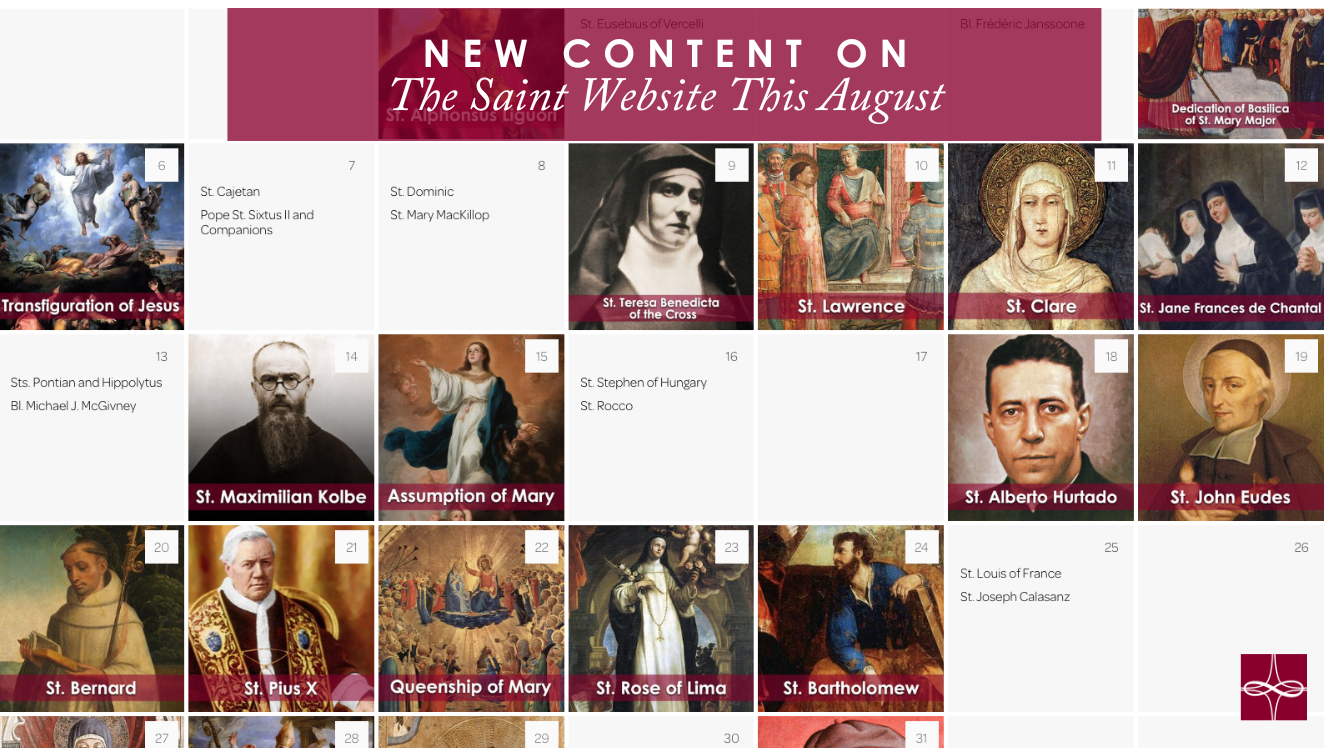

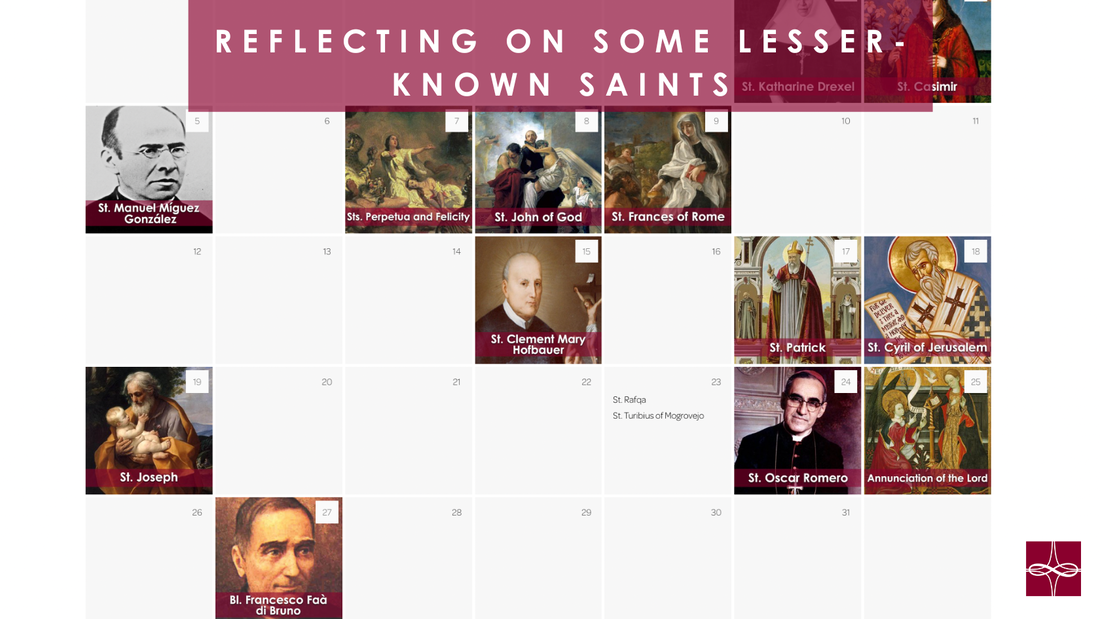


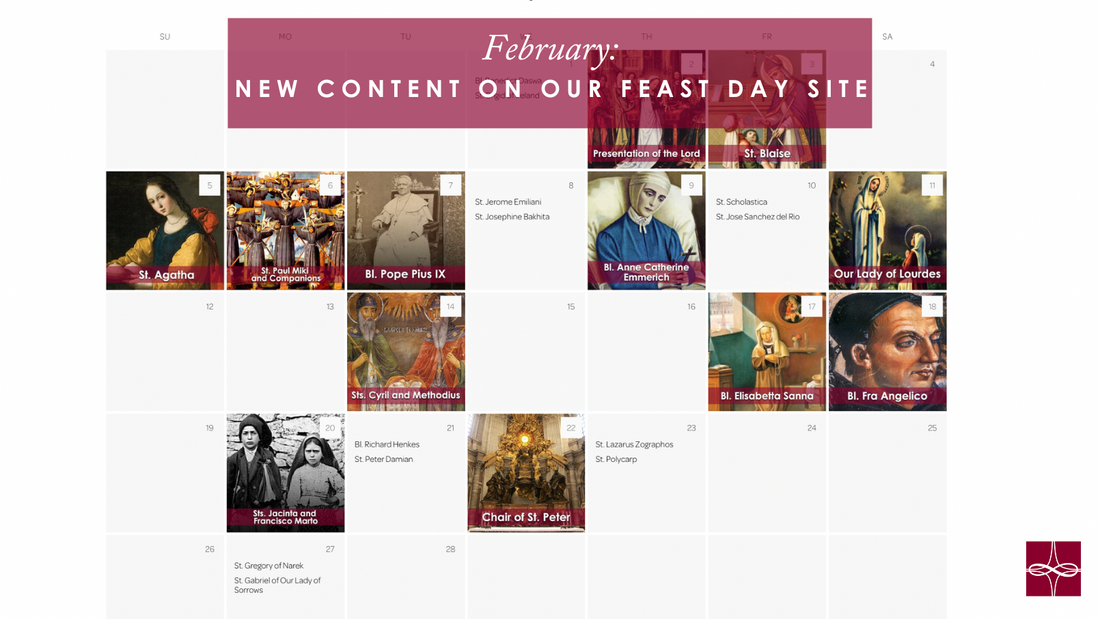
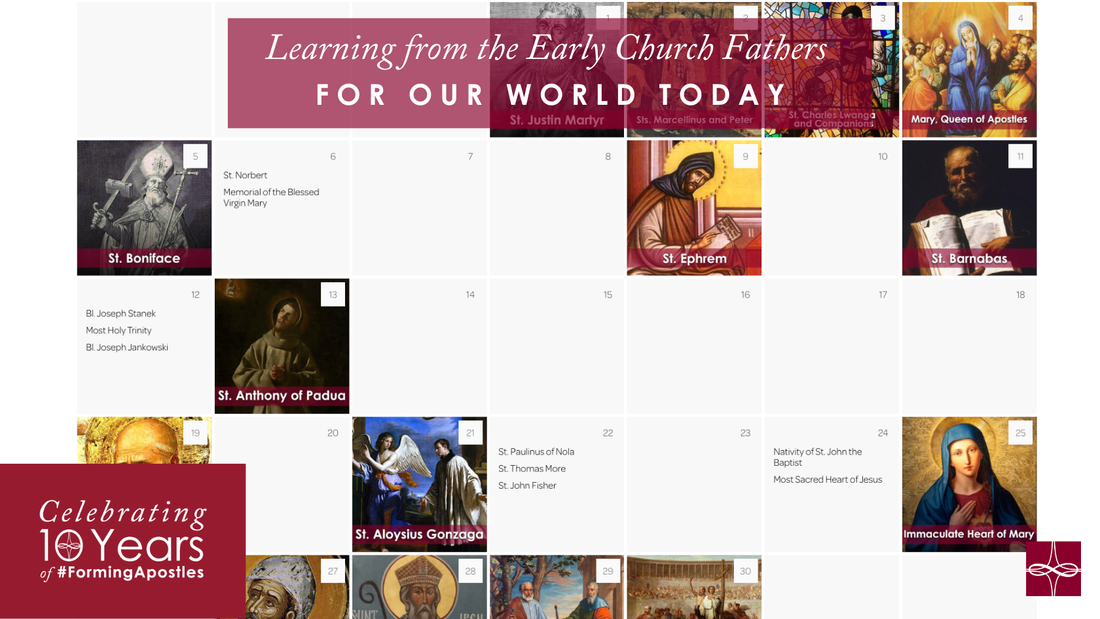



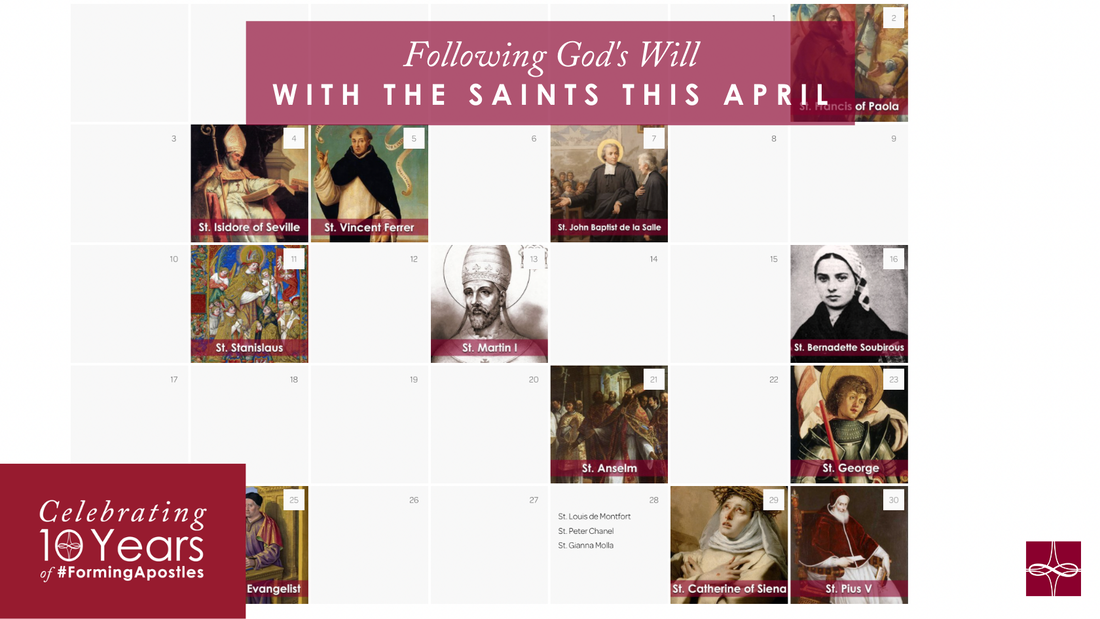

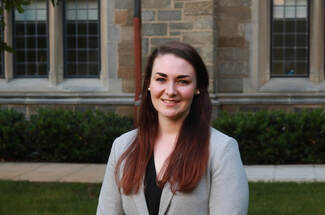
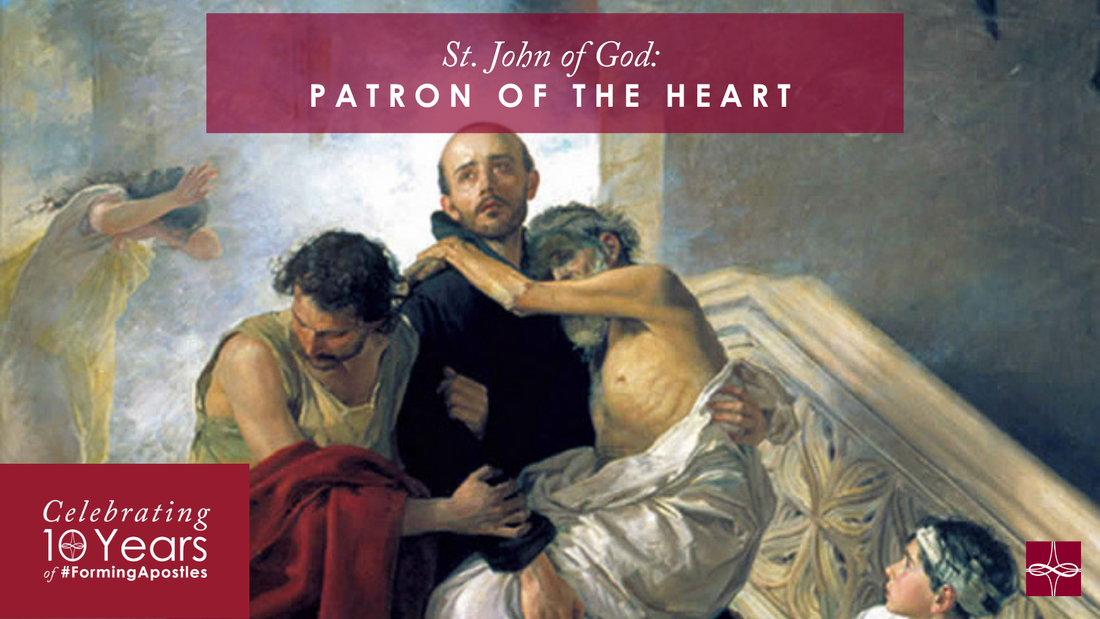
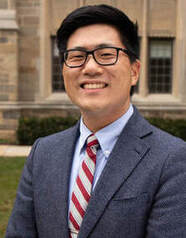
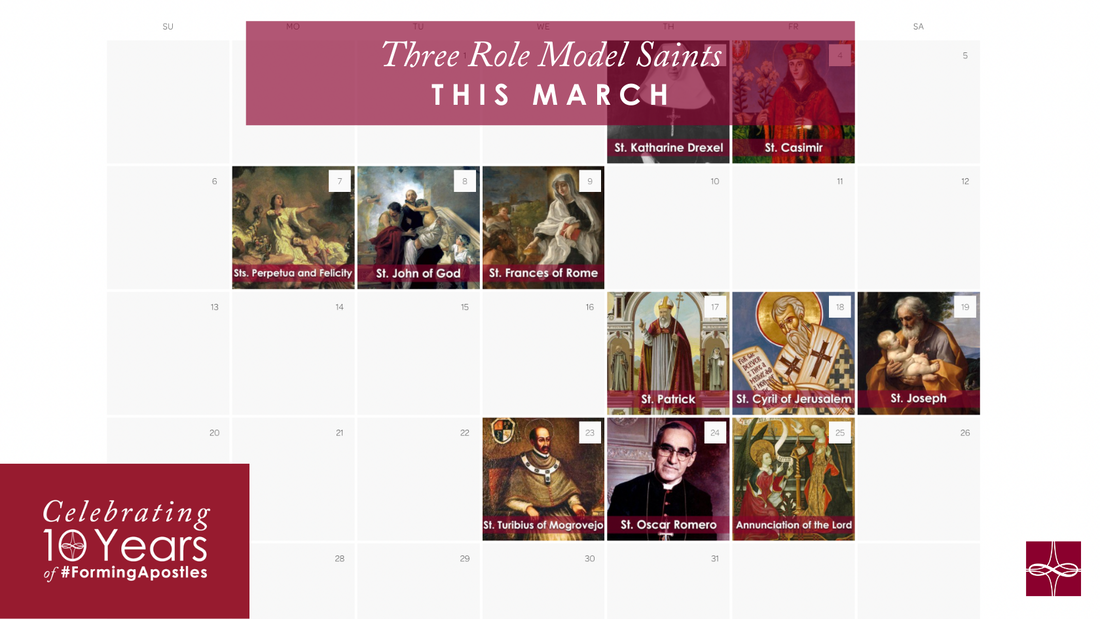
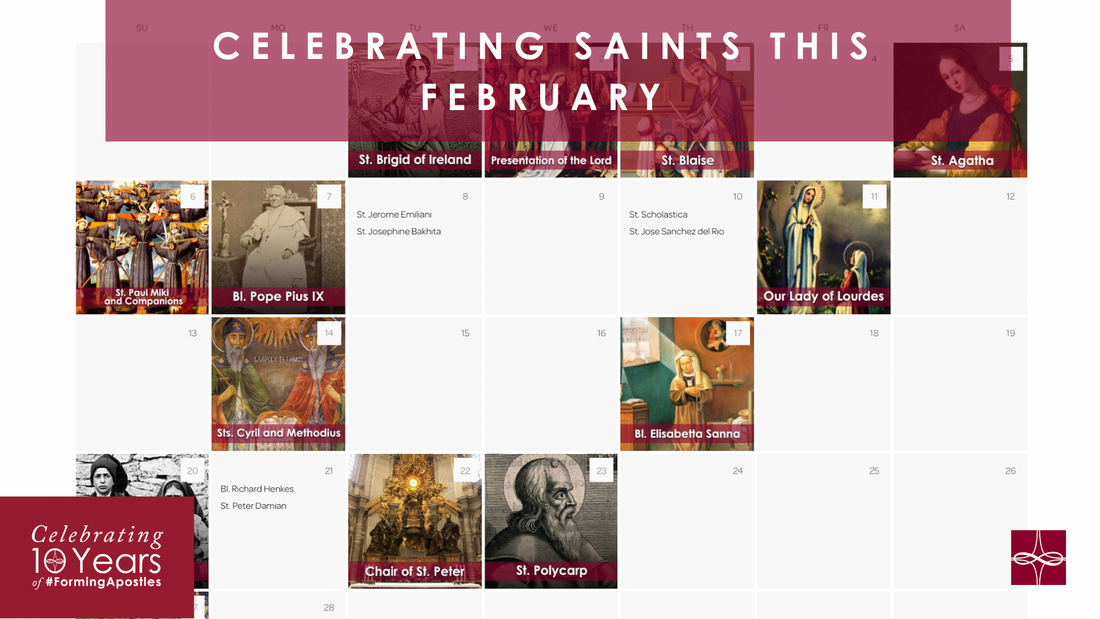
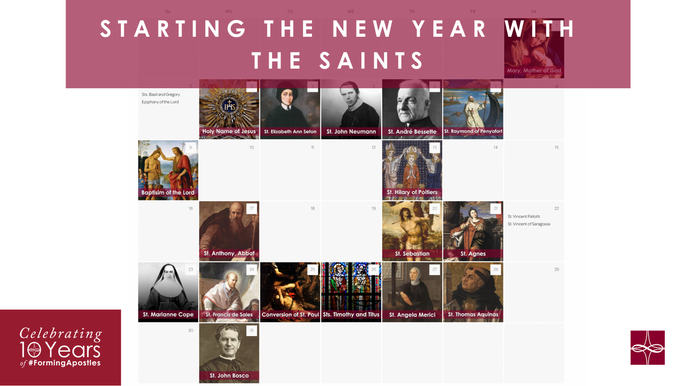

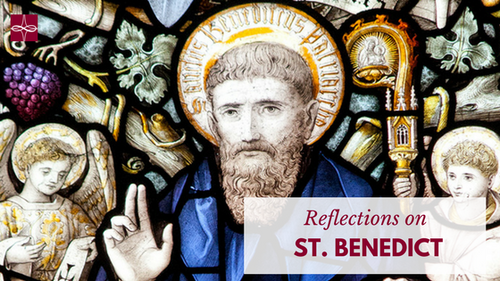
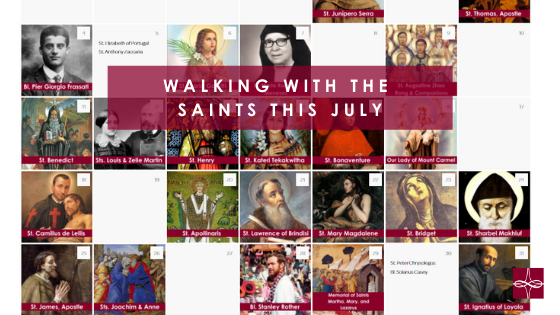

 RSS Feed
RSS Feed